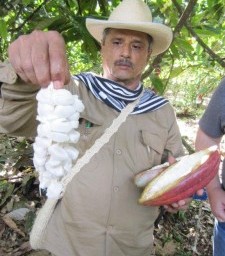This past fall I traveled to beautiful Colombia to visit the birthplace of the delicious Fair Trade Certified™ Cordillera chocolate with which Bon Appétit Management Company chefs bake. In this second post of the series, I share some of the details of my visits to cacao farms.
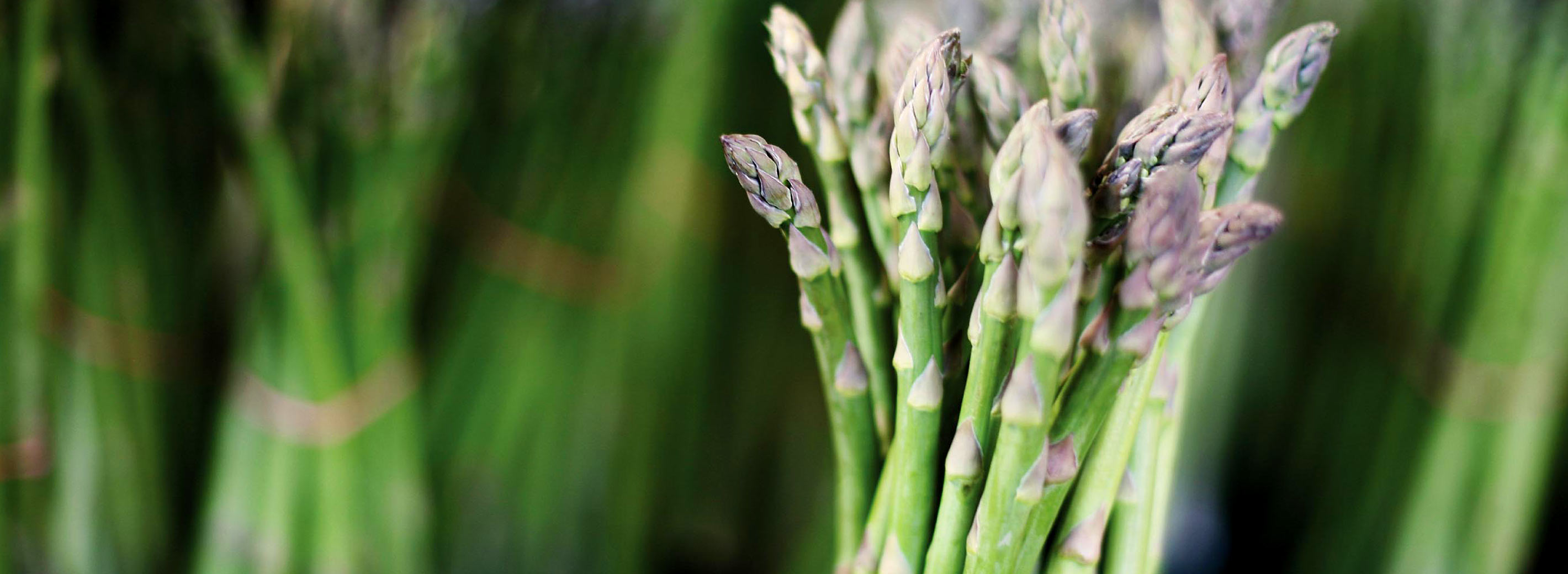
Blog: Farms
+ Blog Categories
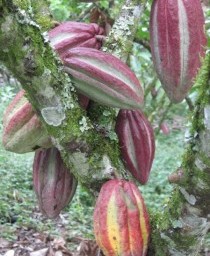
Field Trip: Visiting Colombia’s Cordillera Chocolate Growers
- Blog
Chocolate is such an integral part of American culture, and I too believe that little in this world can beat a bite of really fantastic chocolate. Well, I’m happy to report that getting to see where chocolate comes from, and learning all about how it’s grown and processed, actually gave consuming the finished product a run for its money. In October I had the immense pleasure of traveling to central Colombia to visit the birthplace of the delicious Fair Trade Certified™ Cordillera chocolate with which Bon Appétit Management Company chefs bake.
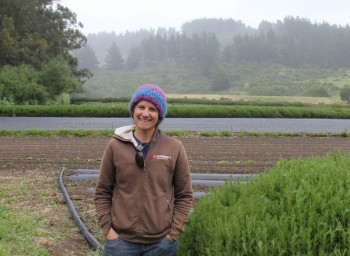
Jacobs Farm Proves that Big Isn’t Bad
- Blog
Jacob’s Farm is 300 acres plus 1 million square feet of greenhouse space filled with wonderfully pungent smells, intensely flavorful tastes, and beautiful, brightly colored flowers. This is one of the largest farms I’ve visited on my travels — and one of the most socially responsible. Jacob’s Farm offers great benefits to its employees: paying more than minimum wage and offering health care, dental care, and a 401(k) plan; and providing paid time off and end-of-year bonuses.
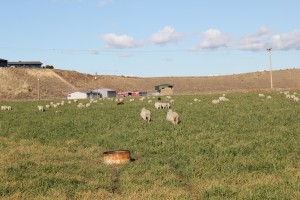
Whitman Team Supports Grass-Based Ranchers
- Blog
Located in the heart of ranching country, Whitman College in Walla Walla, WA, is proud to support the work of grass-based ranchers like Cheryl and Robert Cosner of Upper Dry Creek Ranch.
Whitman Executive Sous Chef Julie Zumwalt, Dining Manager Susan Todhunter, and I recently had a chance to visit the Cosners. We stood between two grassy hills dotted with heritage apple trees in the foothills of the Blue Mountains in Weston, OR, where the Cosners raise lamb and beef on 2,200 acres of certified organic grassland.
Farmer Trent Hendricks Serves Up the Truth About Bon Appetit’s Farm to Fork Program
- Blog
At Bon Appétit Management Company, we take a lot of pride in our Farm to Fork program, in which we purchase fresh, local food from small farmers around the country. As part of its second annual Food Week, the University of Pennsylvania hosted a “Farmville Forum”: during this panel, Farm to Fork Partner* Trent Hendricks of Hendricks Farm and Dairy spoke quite frankly about his relationship with Bon Appétit and what it meant for his business: Transcript:
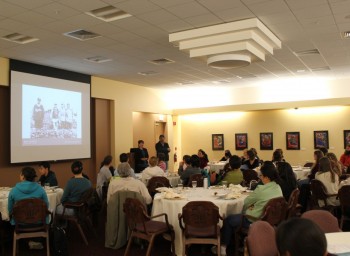
Irma Mendoza’s Story: The Difference Between Conventional and Organic
- Blog
The final event of last spring’s Your Food Chain series at Santa Clara University ended with the theme of strawberries. I had the honor of speaking alongside strawberry farmer Irma Mendoza. When Irma was 17, she left Mexico for the United States and naturally sought out a farm job. She started out harvesting strawberries, but her experiences growing in California were different from growing up in Mexico. The biggest difference being that the berries were grown with extremely toxic pesticides and chemical fertilizers.
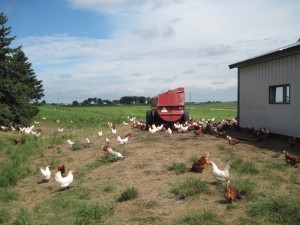
Field Trip: A Visit to Larry Schultz’s Organic Farm
- Blog
The words “free range” conjure up many different images in people’s minds, the most idyllic of which includes luscious fields as far as the eye can see without any fencing to dilute the monotony of green. Unfortunately, the phrase isn’t regulated, so it more often gets slapped on chicken raised by the tens of thousands in a hangar-sized shed. But truly free range does exist — and it’s the lifestyle enjoyed by chickens on Larry Schultz Organic Farm in Owatonna, MN. Larry is one of Bon Appétit’s 1,000-plus Farm to Fork partners, supplying organic chicken to St. Olaf College in Northfield, MN.
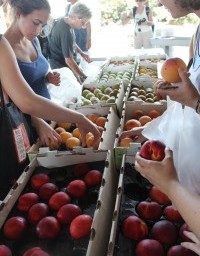
Mills College Takes a Field-to-Fork Trip to Frog Hollow Farm
- Blog
In certain circles, some farmers are as famous as rock stars. Bon Appétit Farm to Fork partner Al Courchesne of Frog Hollow Farm in Brentwood, CA, is one of them. Renowned Berkeley, CA, restaurateur Alice Waters has been known to serve his O’Henry peaches, Rainier cherries, Goldensweet apricots, and Warren pears unadorned for dessert at Chez Panisse. To learn why, I organized a tour of Al’s farm along with a group of 50 faculty members, staff, students, and Bon Appétit Sous Chef Cheylin Hale from Mills College in Oakland, CA.
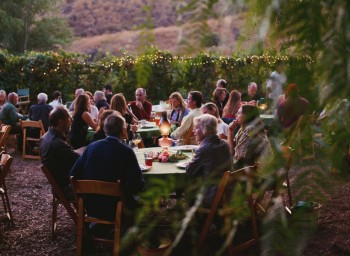
Redlands Farm Feast Connects Eaters, Farmers, and Chefs
- Blog
Redlands in California’s San Bernardino Valley has a rich agricultural heritage, having once been one of the area’s largest producers of citrus crops. The Redlands Conservancy seeks to preserve both the agricultural land and its heritage – goals Bon Appétit is proud to support.
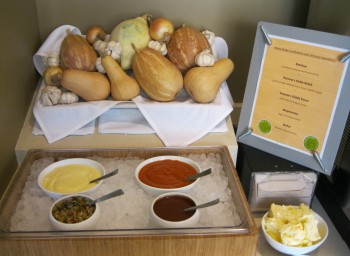
Eat Local Challenge 2011: Nourishing Guests, Communities, and the Environment
- Blog
How local can you go — food wise? That was the challenge taken up by dozens of Bon Appétit Management Company chefs in 31 states for the seventh annual Eat Local Challenge on Tuesday, September 27, 2011. Some cooked a meal from 99.9% local ingredients, with salt as the only allowable non-local ingredient. A few went 100% local — meaning they even foraged for salt from within 150 miles of the café. Others focused on serving one excellent local meal. The reasons to source local ingredients are simple but important if you care about sustainability: it tastes better, is more nutritious, encourages biodiversity, preserves open space, and protects the environment, just to name a few. The companywide Farm to Fork program has helped Bon Appétit accounts learn about what’s available in their area throughout the year, and how to use […]
